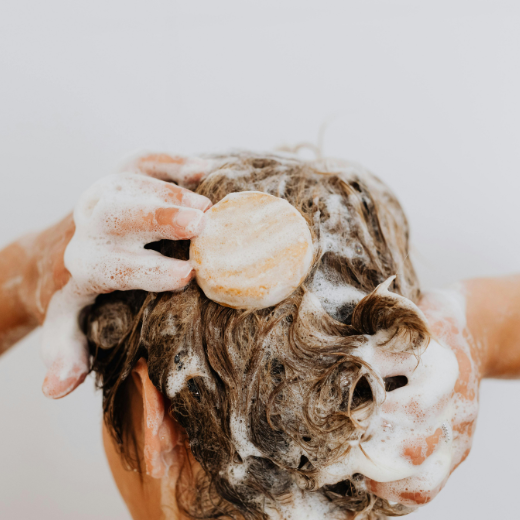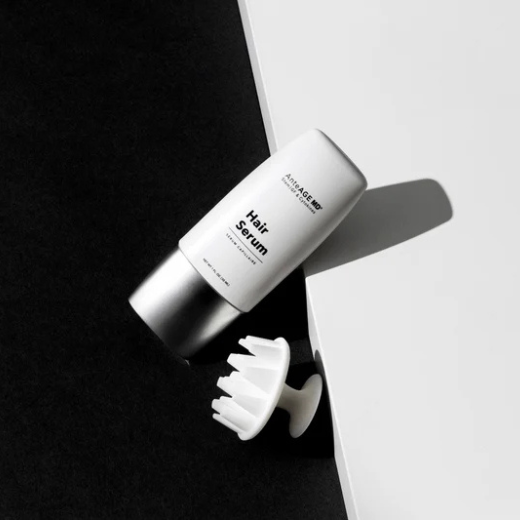6 Things You Can Do for Thinning Hair
Posted by Nikki Wisher on Oct 9th 2025
Thinning hair is incredibly common among people of all genders, especially as we get older. But that’s like saying, “I know your root canal sucks, but a lot of people get root canals”…it doesn’t make it any more fun. What can make it better is taking concrete steps to reduce or reverse your hair loss.
It’s worth noting that hair thinning happens for countless different reasons, and everyone can be a bit different or respond to treatments in different ways. That’s why the most thorough and effective way to deal with it is to go to a doctor, ideally one who specializes in hair loss, to find out what’s contributing to your thinning hair and how best to fix it. But if you’re not quite there yet, here are six things you can do on your own that could help with your thinning hair.
1. Swap Out Your Shower Products
Try to use a gentle, hydrating shampoo when you wash your hair. An overly harsh shampoo can cause inflammation in your scalp and can dry out your scalp and your hair, which contributes to breakage and makes your thinning hair worse. It can help to use a hydrating conditioner too. If you notice breakage when you comb your hair after washing it, try adding a leave-in conditioner or a detangler. Anything that causes breakage will make your thinning hair look thinner.

2. Get Your Protein In
Hair is mostly made of protein, particularly a protein called keratin, which your body makes by breaking down the proteins you eat and putting the protein building blocks back together as keratin. If you’re protein-deficient, your body might not have enough protein to create strong, healthy hair. So whatever form you prefer your protein to be in, make sure you’re getting it in every day.
The current recommendation is 0.8 grams of protein per kilogram of body weight. For example, if you weigh 150 pounds, that equates to 68 kilograms, which means you should aim for 54 grams of protein daily.
3. Consider a Hair Growth Supplement
There are supplements made specifically to help your hair grow thicker, stronger, and healthier. They typically contain a mixture of essential vitamins and nutrients that your body needs for healthy hair along with specialized ingredients that stimulate hair growth. Nutrafol for Women or Nutrafol for Men are popular options that are widely recommended by dermatologists.

On top of this, make an effort to eat a balanced diet. Your body needs an array of vitamins and minerals to create hair, so the more rich, healthy, and balanced your diet is, the better poised your body will be to grow stronger hair (and to function better in every other way, too).
4. Treat Your Scalp to a Massage
Blood is the, well, lifeblood of your hair. Blood flow brings hair follicles the nutrients and oxygen they need to do their job, and stimulating healthy blood flow to your scalp can re-energize those follicles for healthier, stronger hair growth. A simple way to improve your circulation to your scalp is with a quick daily scalp massage. In fact, there was a study in Japan that studied a group of men who massaged their scalps for four minutes per day with a scalp massager, and they had visibly thicker hair after doing this for six months.
5. Try a Hair Serum
Did you know that there are topical serums you can apply to your scalp to help with hair growth? For example, the AnteAGE Hair Serum is designed to stimulate your hair follicles’ stem cells, revitalizing the follicles and encouraging new hair growth. It makes your hair not only thicker but stronger and healthier too.

6. Give Your Hair a Break
Inflammation in your scalp can contribute to hair loss, and hair breakage can give the appearance of thinner hair too. To combat both of those issues in one, you might consider taking it easier on your hair. We all love a fun hair transformation, but chemical treatments and dyes can be very harsh and irritating to your hair and your scalp, especially when they’re DIY. Try taking a break from these types of treatments, or at least investing in having them done by a professional hairstylist. Likewise, try to limit the amount of heat you use on your hair, even if that just means turning down the temperature on your blow dryer and styling tools.
If your hair is getting thinner, don’t panic. There are ample treatments that your doctor can offer to help, but the home remedies above can also help your hair regain its fullness. Remember that everyone’s hair loss can vary and your hair may respond differently to some therapies than others, so take your time and approach the journey as the trial and error process that it needs to be.

